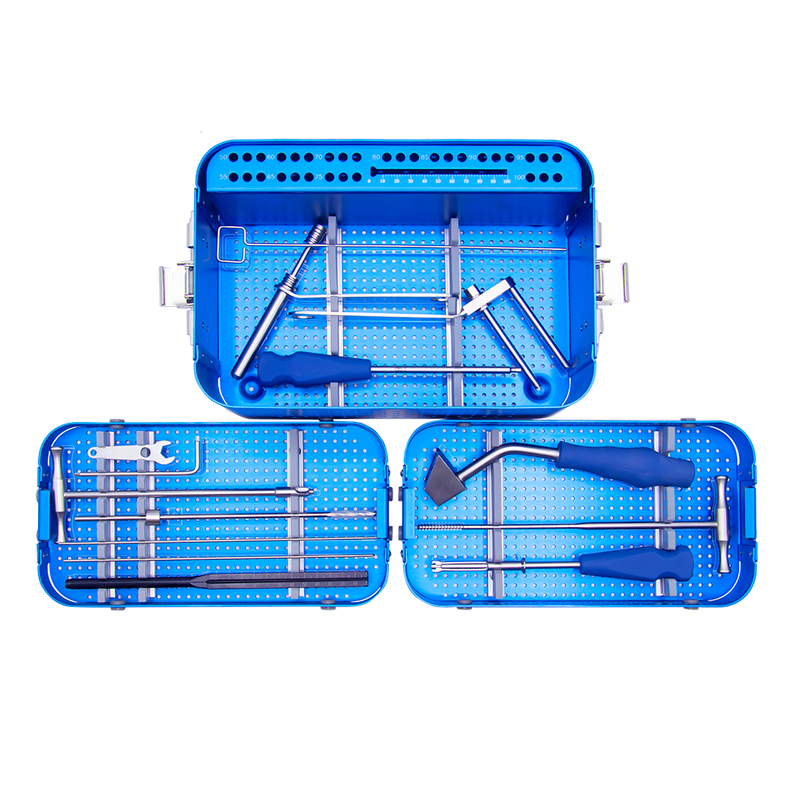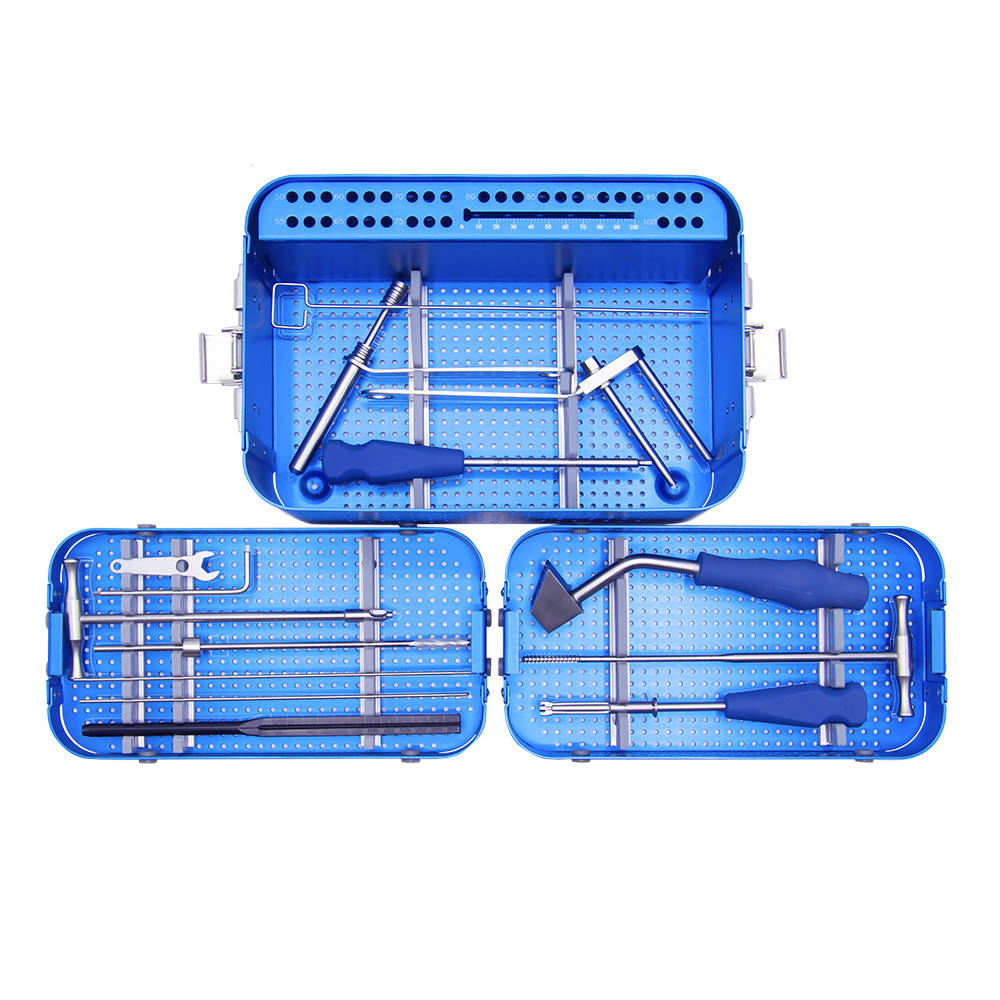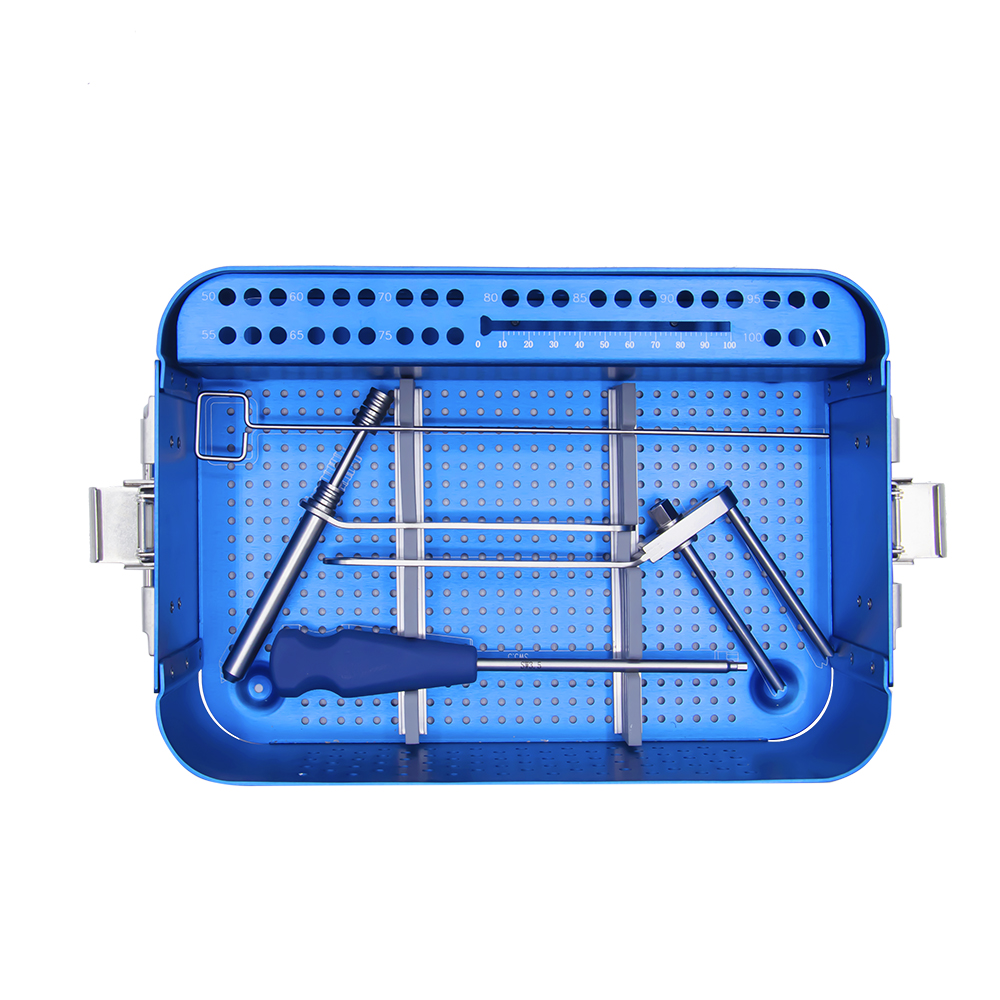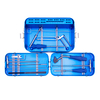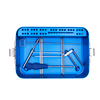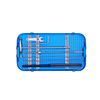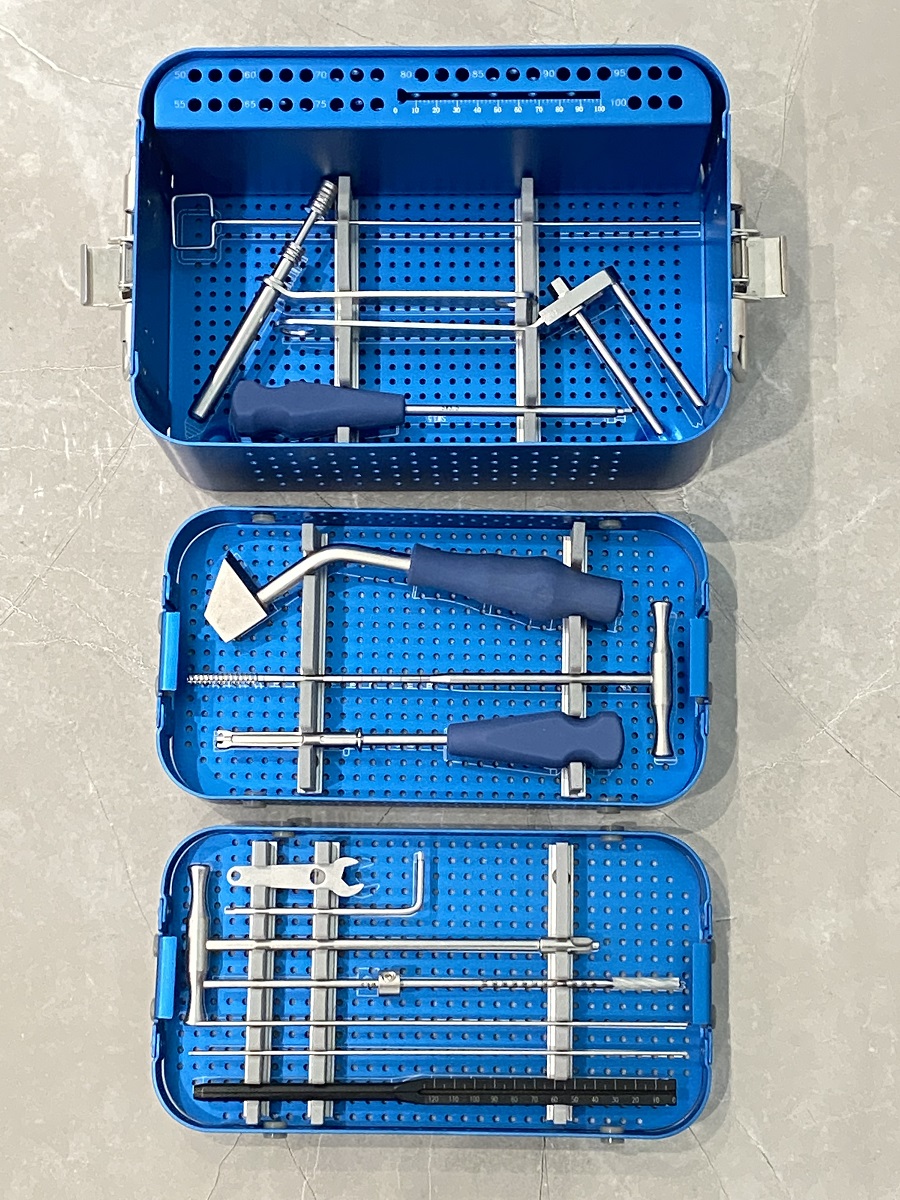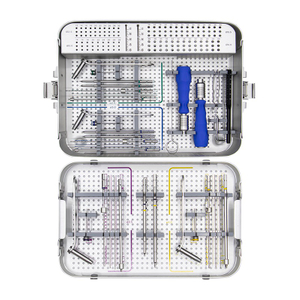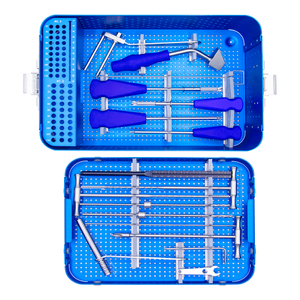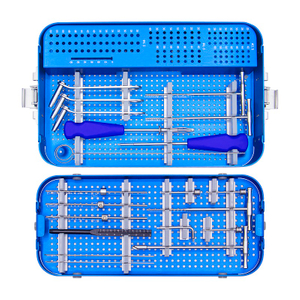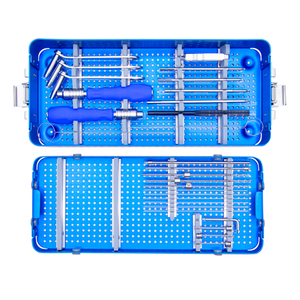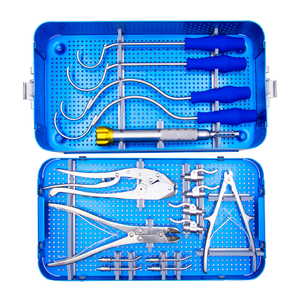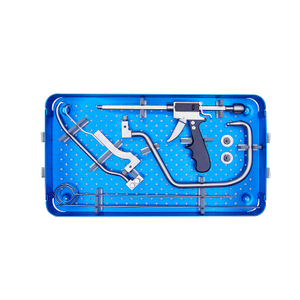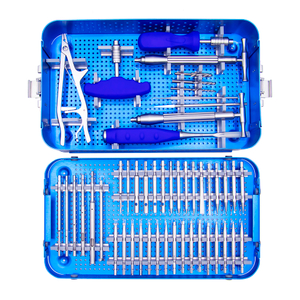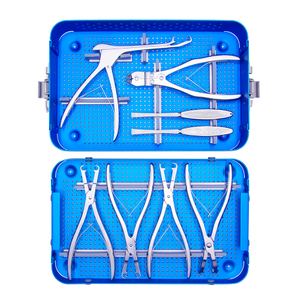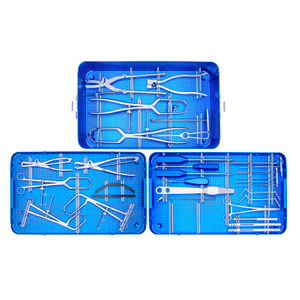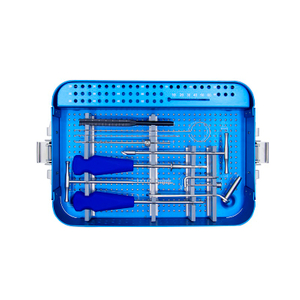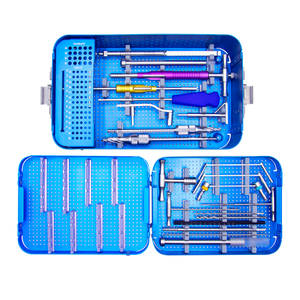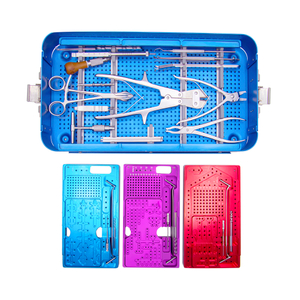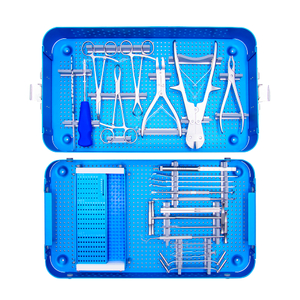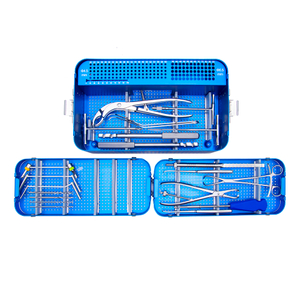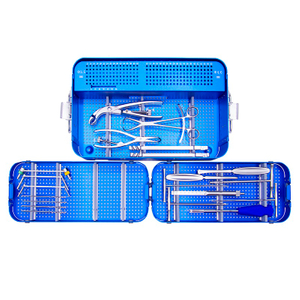6.5mm Cannulated Screw Instrument Set: Anatomy, Applications, and Techniques
The 6.5mm cannulated screw instrument set is a surgical tool used in orthopedic surgeries to stabilize bone fractures. These screws are hollow and designed to allow for a guide wire to be inserted into the bone before the screw is placed, thus minimizing soft tissue damage during surgery. In this article, we will explore the anatomy, applications, and techniques of using the 6.5mm cannulated screw instrument set.
Anatomy of 6.5mm Cannulated Screw Instrument Set
The 6.5mm cannulated screw instrument set consists of a screw, a guide wire, a cannulated drill bit, and a handle. The screw is made up of stainless steel and is threaded to allow it to grip the bone tightly. The guide wire is used to insert the screw into the bone and is placed first, followed by the screw. The cannulated drill bit is used to create a pilot hole for the guide wire and screw, and the handle is used to manipulate the instruments during surgery.
Applications of 6.5mm Cannulated Screw Instrument Set
The 6.5mm cannulated screw instrument set is commonly used in the treatment of fractures in long bones, such as the femur and tibia. These screws are especially useful in fractures that are unstable and require fixation to prevent displacement. The cannulated design of the screws allows for minimal soft tissue damage during insertion, which can help to promote faster healing and reduce the risk of complications.
In addition to treating fractures, the 6.5mm cannulated screw instrument set can also be used in the treatment of osteotomies (the surgical cutting of bone) and in arthrodesis (the surgical fusion of two bones).
Techniques for Using the 6.5mm Cannulated Screw Instrument Set
Before using the 6.5mm cannulated screw instrument set, it is important to properly assess the patient and their injury to ensure that this type of fixation is appropriate. The surgical technique for using the 6.5mm cannulated screw instrument set involves the following steps:
Prepare the patient for surgery and administer anesthesia.
Make an incision at the site of the fracture or osteotomy.
Use imaging techniques such as X-rays or fluoroscopy to guide the insertion of the guide wire into the bone.
Use the cannulated drill bit to create a pilot hole for the guide wire and screw.
Insert the guide wire into the bone and verify its placement using imaging techniques.
Insert the screw over the guide wire and tighten it until it is secure.
Close the incision and apply a cast or other immobilization device as needed.
It is important to note that the use of the 6.5mm cannulated screw instrument set requires proper training and experience to avoid complications such as improper screw placement or damage to surrounding tissues.
Advantages and Disadvantages of Using 6.5mm Cannulated Screw Instrument Set
The 6.5mm cannulated screw instrument set has several advantages over other types of fixation devices. These include:
Minimal soft tissue damage during insertion
High stability and fixation strength
Faster healing times due to minimal soft tissue damage
Minimal risk of implant-related complications
However, there are also some disadvantages to using the 6.5mm cannulated screw instrument set, including:
Potential for damage to surrounding tissues during insertion
Difficulty with screw placement in certain anatomical areas
Potential for implant failure in certain types of fractures
සිංහල
English
Français
Русский
Español
العربية
Português
Deutsch
italiano
한국어
Tiếng Việt
ไทย
Polski
Türkçe
ພາສາລາວ
ភាសាខ្មែរ
Bahasa Melayu
ဗမာစာ
Filipino
Bahasa Indonesia
magyar
Română
Čeština
Монгол
қазақ
Српски
हिन्दी
فارسی
Kiswahili
Slovenčina
Slovenščina
українська
Ελληνικά
Latine
বাংলা
Afrikaans
Māori
नेपाली
Oʻzbekcha
latviešu
Azərbaycan dili
Беларуская мова
Български
Esperanto
ქართული
Kreyòl ayisyen
Kinyarwanda
Кыргызча
Lietuvių
Lëtzebuergesch
Malti
संस्कृत
Soomaali
Türkmençe
ئۇيغۇرچە

